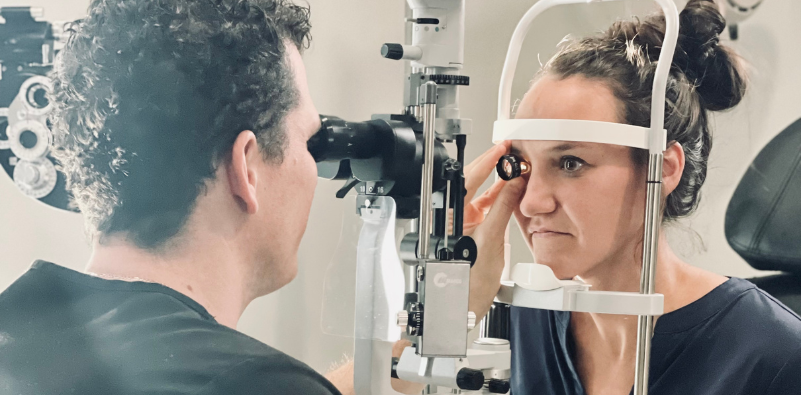What are the signs of cataracts?
Most people have probably heard of cataracts but know little about them. As it’s thought to affect 20.5 million Americans 40 years old and above, and 6.1 million Americans have required cataract surgery, we think it’s important to share some of the lesser-known facts about this condition.
We’ll explain exactly what cataracts are, answer the commonly asked question, ‘what are the signs of cataracts?’, discuss their causes, risk factors, and symptoms to look out for, and how we can help.
What are cataracts?

The lens in our eye is mostly constructed from clear, flexible proteins. As we inevitably age, these proteins break down, clumping together, causing our vision to become cloudy or blurry. Typically, this happens very slowly, but it can get to a point where even simple daily tasks such as reading or driving become extremely difficult.
Causes and risk factors

Age is the biggest risk factor here, with the development of cataracts usually starting around 40—although you may be in your 60s before you notice any changes to your vision.
The exact causes of cataracts are unknown, but studies have shown that certain factors increase the chances. Genetics plays a role, so if anyone in your close family has had cataracts, then it’s more likely you’ll also develop them. Eye injuries, diabetes, UV exposure, long-term use of steroids, and excessive alcohol consumption have also been found to put you more at risk.
Can smoking cause cataracts? Smoking wreaks havoc quietly and silently on many areas of our bodies, including our eyes. While it’s impossible to give a definitive answer on how much, smoking is often categorized as a risk factor.
Signs and symptoms

So, what are the signs of cataracts to look out for? You may notice:
- cloudy, blurry, misty, or foggy vision
- colors appearing for faded or yellow
- lights appearing overly bright or glaring
- difficulty seeing in low-light conditions
- vision becoming progressively worse, especially near-sightedness.
How can we help?

Our lead optometrist, Dr. Jason Kvitle, is certified to diagnose and treat eye diseases, including cataracts. If necessary, a cataract screening can be performed as part of our comprehensive eye exams.
Dr. Kvitle will use assessments such as pupil dilation and specialist equipment, along with glare tests and BAT (brightness acuity testing) to provide a more in-depth understanding of any presence of cataracts and how advanced they are.
What is the treatment for cataracts?

Stronger prescription glasses or brighter reading lights, for example, can be used to counter the early symptoms of cataracts, but as the condition worsens, surgery is the best option to remove the cloudy lens and replace it with an artificial one.
If Dr. Jason Kvitle diagnoses you with advanced cataracts, he can carry out pre-op assessments, so you are fully prepared for cataract surgery. We work closely with a visiting specialist from St. Louis, Dr. Gira, as well as a team of excellent local doctors.
Cataract surgery is usually a straightforward outpatient procedure which should allow you to resume all normal activities in about 7 days and will completely heal within 8 weeks. You should see significant improvement in your vision after just 2-3 days post-surgery.
We also believe aftercare is just as important, so Dr. Kvitle will see all cataract patients post-surgery for eye evaluations and to provide follow-up advice.
Book an eye exam – Quincy, IL
Regular checkups are essential for detecting cataracts and many other eye diseases. We encourage you to contact us if you have experienced any cataract symptoms or if you’re not sure when your last eye exam was or book your eye exam in Quincy, IL, online.
 1107 College Ave Quincy, IL 62301
1107 College Ave Quincy, IL 62301


